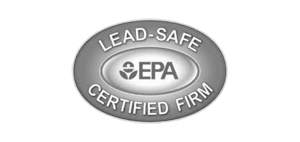Severe water damage can wreak havoc on your home, causing structural issues and creating a breeding ground for mold and mildew. When faced with such a situation, it’s crucial to take immediate action and implement the right steps to fix the damage and restore your home to its pre-damaged condition. But where do you start? What are the professional restoration steps you need to follow? Let’s find out.
Key Takeaways:
- Severe water damage requires prompt and effective action to prevent further harm and ensure the safety of your home.
- Identifying the source of the water damage is the first step in the restoration process.
- Prioritize safety by turning off the power and following proper water cleanup procedures.
- Engaging with your insurance company can help alleviate the financial burden of water damage repairs.
- Professional restoration steps involve advanced techniques for water extraction, mold remediation, and structural repairs.
Identifying the Source of the Water Damage
The first step in fixing severe water damage is to identify the source of the water. This is crucial as it will help you determine the appropriate course of action and prevent further damage. Common sources of water damage include broken pipes, leaks, foundation cracks, and sewer backups.
To identify the source of the water damage, follow these key steps:
- Locate the source: Start by visually inspecting the affected area and looking for any visible signs of water. Check for dripping pipes, water stains on walls or ceilings, and standing water. In some cases, the source may be obvious, while in others, it may require further investigation.
- Determine the type of water: It’s essential to determine whether the water causing the damage is clean, gray, or black. Clean water comes from sources like broken pipes or supply lines, while gray water may contain contaminants and comes from sources like showers or dishwasher overflows. Black water is highly contaminated and often comes from sewage backups. Knowing the type of water will help determine the necessary safety precautions.
- Consider hidden sources: Sometimes, the source of water damage may not be immediately visible. In such cases, it may be necessary to use moisture detection tools or consult with professionals to identify the hidden source, such as leaking pipes behind walls or under floorboards.
By effectively identifying the cause of the water damage, you can take the necessary steps to fix it and prevent further issues. Remember to document the source and any visible damage for insurance purposes. Once you have identified the source, you can move on to the next steps in the restoration process.
Stopping the Flow: Power and Water Safety Precautions
Before you embark on fixing severe water damage, prioritizing safety is crucial. Taking the necessary precautions will not only safeguard your well-being but also prevent electrical hazards and injuries. Follow these key safety measures to minimize the risks associated with water damage and create a safe environment for restoration work.
1. Turn Off the Power
When dealing with water damage, the first step is to turn off the power supply to the affected area. Water is a conductor of electricity, and leaving the power on can increase the risk of electrical shock or even cause a fire. Locate the main electrical panel in your home and switch off the circuit breakers for the affected areas.
2. Avoid Contact with Contaminated Water
Water damage can introduce contaminants into your home, including bacteria, sewage, or harmful chemicals. It’s vital to avoid direct contact with the water to prevent the risk of illness or infection. Put on protective gear, such as rubber gloves, boots, and masks, when handling or cleaning up the water. If the water damage is extensive or involves sewage backup, it’s best to seek professional assistance.
3. Follow Proper Procedures for Water Cleanup
When cleaning up water damage, it’s important to follow proper procedures to ensure safety and prevent further damage. Begin by removing any standing water using a wet-dry vacuum or buckets. Use mops, towels, and fans to dry out the affected areas. If the water damage is extensive or involves significant structural damage, it’s advisable to contact a professional restoration company for assistance.
Engaging With Your Insurance Company for Water Damage Claims
Water damage incidents can result in significant financial burdens. However, if you have adequate insurance coverage, it can help alleviate the costs associated with repairs and restoration. To ensure a smooth and successful claims process, it is essential to engage with your insurance company in a proactive manner.
When filing a water damage claim, the first step is to document the extent of the damage. Take photographs or videos of the affected areas, highlighting the water damage and any items that have been affected. This visual evidence will be crucial when supporting your claim and negotiating with your insurance provider.
Once you have documented the damage, promptly contact your insurance provider to report the water damage incident. Provide them with all the necessary details, such as the cause of the damage, date, and any relevant policy information.
After notifying your insurer, they will assign an adjuster to assess the extent of the water damage. The adjuster will visit your property, inspect the damage, and determine the coverage and compensation you are eligible for. Be prepared to provide any additional information or documentation that the adjuster may request to support your claim.
During the assessment process, it is crucial to communicate openly with the adjuster and provide accurate information. Answer any questions they may have and provide any additional evidence or documentation they require. This will help streamline the claims process and increase the chances of receiving proper compensation for your water damage repair.
Throughout the claims process, be sure to keep detailed records of all communication with your insurance company, including dates, names of the representatives you speak with, and a summary of what was discussed. This information will serve as valuable documentation in case any disputes arise.
By actively engaging with your insurance company and following the proper procedures, you can increase your chances of a successful water damage claim. Remember to document the damage, promptly notify your insurer, cooperate with the assigned adjuster, and maintain detailed records. Being proactive in the claims process will help ensure that you receive the insurance coverage you deserve for your water damage repair.
Water Damage Cleanup and Drying Strategies
Once the water source has been addressed and the necessary safety precautions have been taken, it’s time to start the cleanup and drying process. Effective water damage cleanup is crucial to prevent further damage and restore your home to a dry and safe condition.
In this section, we will provide detailed instructions on how to clean up water-damaged areas and implement drying strategies.
Clean Up Water-Damaged Areas
The first step in water damage cleanup is to remove any wet items and debris from the affected areas. Start by wearing protective gear such as waterproof gloves and boots. Carefully dispose of any items that cannot be salvaged, as they may harbor mold and bacteria.
Next, clean the surfaces with a mild detergent and warm water solution. Scrub gently to remove any dirt or contaminants. Pay close attention to areas that are prone to mold growth, such as walls, floors, and furniture.
After cleaning, rinse the surfaces with clean water and dry them thoroughly. Use absorbent materials such as towels or mops to soak up excess water. Proper ventilation will help expedite the drying process.
Implement Drying Strategies
To effectively dry out water-damaged areas, it’s important to create airflow and reduce humidity. Here are some drying strategies to follow:
- Open windows and doors to promote air circulation.
- Use fans or dehumidifiers to remove moisture from the air.
- Position fans and dehumidifiers strategically to target the wettest areas.
- If possible, remove baseboards and drill small holes in the walls to facilitate drying.
- Monitor humidity levels with a hygrometer. Aim for a humidity level below 50%.
- Continue the drying process until all affected areas are completely dry.
By following these water damage cleanup and drying strategies, you can effectively restore your home to a dry and safe condition.
How Do You Fix Severe Water Damage? Professional Restoration Steps
When faced with severe water damage, it is crucial to seek the expertise of professional restoration specialists. These professionals possess the necessary knowledge, experience, and equipment to effectively restore your property. In this section, we will outline the typical steps taken by restoration professionals to fix severe water damage and bring your home back to its pre-damaged condition.
Professional water damage restoration begins with a comprehensive assessment of the affected areas. Restoration experts will thoroughly inspect the property to determine the extent of the damage and identify any hidden issues. This step is crucial in developing an appropriate restoration plan tailored to your specific situation.
Once the assessment is complete, restoration professionals will proceed with advanced water extraction techniques. Using state-of-the-art equipment, they will efficiently remove standing water and excess moisture from the affected areas. This step is essential in preventing further damage and mitigating the risk of mold and mildew growth.
Next, restoration specialists will address any mold contamination resulting from the water damage. They will employ specialized techniques to detect and safely remove mold, ensuring a clean and healthy environment for inhabitants. Mold remediation is a key step in preventing respiratory problems and preserving the structural integrity of your home.
After mitigating the water and mold damage, professionals will focus on structural repairs. They will evaluate and restore any structural elements that have been compromised by the water, such as walls, floors, and ceilings. Restoration experts have the expertise to deliver high-quality repairs, ensuring that your home is safe, functional, and aesthetically pleasing.
Finally, professionals will execute the rebuilding phase, if necessary. This may involve replacing damaged materials, installing new fixtures, and restoring the overall functionality and appearance of the affected areas. Skilled restoration professionals prioritize attention to detail and aim to deliver a seamless restoration process that exceeds your expectations.
In conclusion, severe water damage requires the expertise of professional restoration specialists. By understanding the steps taken by these professionals, you can make an informed decision about whether to tackle the repairs yourself or seek professional help. Professional water damage restoration encompasses advanced techniques for water extraction, mold remediation, structural repairs, and rebuilding, ensuring the comprehensive restoration of your property.
Conclusion
Dealing with severe water damage can be a daunting task for homeowners. However, by following the step-by-step instructions provided in this guide, you can effectively repair water damage and restore your home to its pre-damaged condition. It is crucial to prioritize safety throughout the process, ensuring that you turn off the power and avoid contact with contaminated water.
Engaging with your insurance company is also essential to alleviate the financial burden of water damage repair. Be sure to document the damage, contact your insurance provider, and work closely with adjusters to assess the extent of the damage. This will increase the likelihood of receiving proper compensation for the repairs.
While some water damage cleanup and drying strategies can be done independently, severe water damage often requires professional restoration services. Consider hiring experts who have the necessary knowledge, experience, and equipment to handle advanced techniques such as water extraction, mold remediation, structural repairs, and rebuilding.
By taking timely action, following safety precautions, working with your insurance company, and seeking professional help when needed, you can successfully overcome severe water damage and ensure the long-term integrity of your home. Remember, addressing water damage promptly is crucial to prevent further harm and maintain a safe and healthy living environment.
FAQ
How do you fix severe water damage?
Fixing severe water damage involves identifying the source of the water damage, prioritizing safety, engaging with your insurance company, implementing cleanup and drying strategies, and considering professional restoration steps if needed.
How do you identify the source of water damage?
To identify the source of water damage, you can follow steps such as locating the source and determining the type of water. Common sources of water damage include broken pipes, leaks, foundation cracks, and sewer backups.
What safety precautions should be taken during water damage?
Some important safety precautions during water damage include turning off the power, avoiding contact with contaminated water, and following proper procedures for water cleanup. Prioritizing safety minimizes risks associated with water damage.
How do you engage with your insurance company for water damage claims?
Engaging with your insurance company for water damage claims involves documenting the damage, contacting your insurance provider, and working with adjusters to assess the extent of the damage. Proper documentation increases the chances of receiving compensation.
What are the cleanup and drying strategies for water damage?
Cleanup and drying strategies for water damage include removing wet items, salvaging what you can, and using fans and dehumidifiers to expedite the drying process. These steps help restore your home to a dry and safe condition.
What are the professional restoration steps for fixing severe water damage?
Professional restoration steps for fixing severe water damage may include advanced techniques for water extraction, mold remediation, structural repairs, and rebuilding. Hiring experts with the necessary knowledge and equipment may be necessary.









